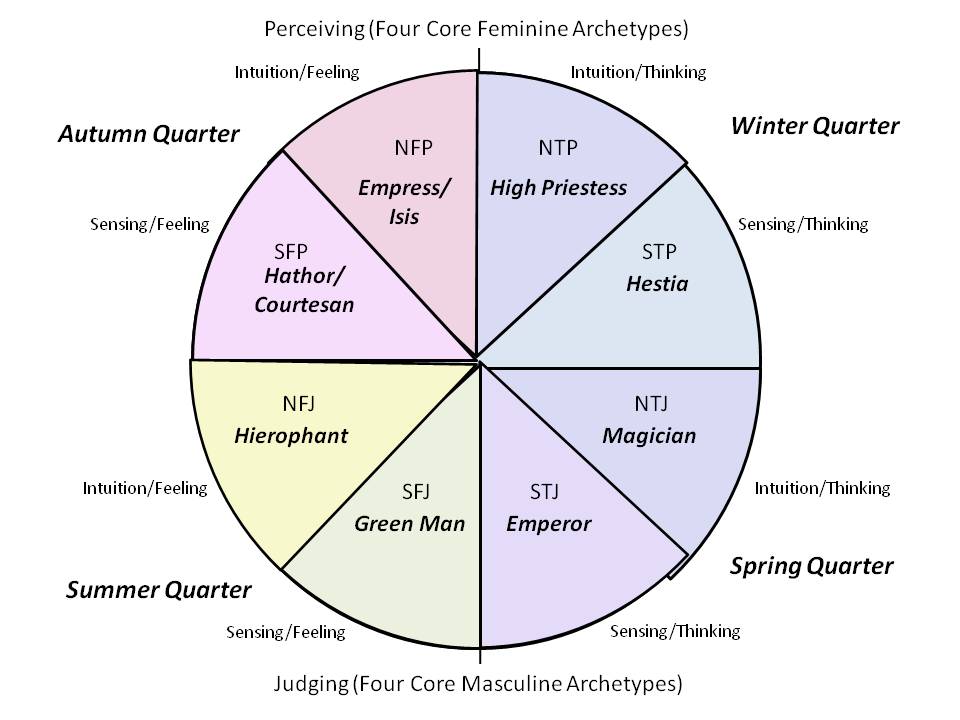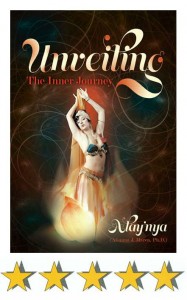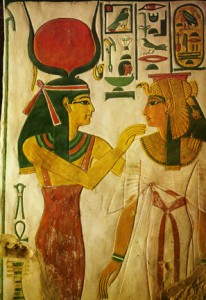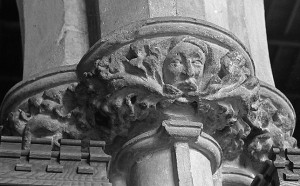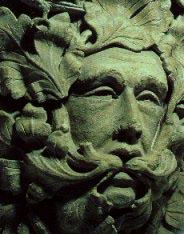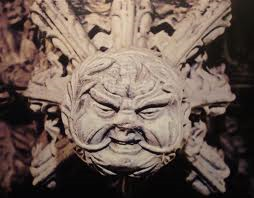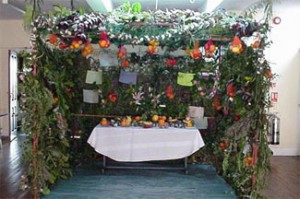What Lies Beyond Your Major Integration Step? (Hint: A Whole New World of Life-Mastery)

Marianne Mader, intrepid explorer and researcher, makes a career of looking for the next adventure. Photo courtesy Centre for Planetary Science and Exploration.
I called up my friend Emma the other day. We hadn’t spoken in ages – I’m still scraping names and contact info off my old (and now retired) computer and pasting them into the new – so it had been a while.
I’m so exhausted, Emma said within the first thirty seconds of our conversation.
Now, Emma is a woman who has done a huge amount of inner work. She’s not shy about taking life by the horns. So it came as a surprise to hear her “blurt.”
Because “blurt” is what we do when we lower our guard and let what is going on – what is really going on – slip out.
Have You Ever Felt This Way?
Have you ever felt as though you’ve gotten it together – you know that you’ve done a whole lot of inner work, and you have had results – and yet you feel that something is missing?
Or maybe you’ve felt that after all your work – and possibly even your teaching of others – that there was some real, fundamental life-lesson that you just weren’t getting?
Do you feel that you’re looking for the next right step in your life?
No big surprise, really.
And this does NOT mean that you’ve done anything wrong.
On the contrary.
What this more likely means is that you have indeed accomplished the first stage of what you set out to do – but now you’re on the verge of a new life-challenge. And this feels just as uncomfortable, just as awkward, just as something-is-missing-and-I-don’t-know-what-it-is as things may have felt years ago, when you first embarked on inner work.
You, my dear friend, are on the threshold of your second major adult life journey.
But before we dive into this one, let’s review what you’ve accomplished already.
Archetype Mastery and Integration – Your First Life-Journey
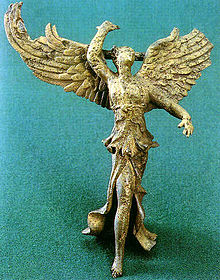
The Greek goddess Niki personifies Winged Victory.
Many of us have already accomplished the biggest challenge of our first adult life-journey. This journey is all about discovering, mastering, and integrating each of our six core power archetypes.
(Catch-Up Note: There are eight core archetypes overall, they correspond well with the Jungian Psychological Types, based on distinctions between Thinking/Feeling, Sensing/Intuitive, and Judging/Perceiving, but not including Introversion/Extroversion. Of the eight core types, six are core power archetypes; the remaining two are rest-and-recharge archetypes. For more details, see the links at the end of this blog post.)
How Do We Gauge Our Inner Mastery Progress?
One way in which we know that we’ve achieved some mastery and integration here is that we seamlessly call upon our Emperor (Protector and Provider) and our Empress (caring and nurturing) archetypes. Anyone who has been both a parent and a career person learns to manage this integration. In Unveiling, I cite Hillary Rodham Clinton, former Secretary of State, as someone who has expertly accomplished this integration.
There are other integrations that we achieve, usually by the time that we’re in our late forties or early fifties. Just as with the Emperor (Psychological Type STJ) and Empress (NFP), these each involve polar-opposite archetype pairs:
- Magician and Hathor (pleasure goddess),
- High Priestess and Green Man, and
- Hierophant and Hestia.
A quick overview of each (with more to come in the future, new bloglinks will be inserted as they come):
The Magician and Hathor – Polar Opposite Archetype Integration
Have you noticed how often a highly creative person will have a muse? Acclaimed fashion designer Giovanni Versace had a very strong Magician archetype. Giovanni’s sister, Donatella Versace, was Giovanni’s muse. She was his Hathor, or pleasure-goddess embodiment. Back then, she was a free-wheeling party-lover. On his death, she had to become the Magician herself. She designed and produced a new fashion collection within three months after Giovanni’s death.
Our Magician archetype is very focused; very intense. By pairing with our inner Hathor, we lighten up a bit.
Your High Priestess Pairs with Your Inner Green Man
Have you ever noticed that, when you need to clear your head and think through something, you go for a walk? That’s your High Priestess calling on your inner Green Man.
Our High Priestess archetype has something in common with our Magician; both of these are abstract thinkers. Our Magician is more likely to create ideas and bring things into reality; our High Priestess is more likely to follow the connections. Our High Priestess takes us into our mull-things-over mode.
Our High Priestess, like our Magician, needs something to pull her outside of herself. In her case, it’s the Green Man. He gets her walking, he gets her out into nature – the physical actions of moving about help free her mind to follow where thought-connections lead her.
Your Hierophant Needs Your Inner Hestia
Have you noticed that people-intensive activities, such as counseling, coaching, and teaching sometimes bring you to a place where you need to recharge your psychic batteries?
If your day-to-day work involves being a Hierophant, and you are helping people work through their lives, then your private life needs to be low-key and quietly supportive.
Benjamin Disraeli, a brilliant man, served twice as England’s Prime Minister during the late 1880’s. Disraeli focused much of his attention on forming a “knight and fair lady” relationship with Queen Victoria. When asked how he did so well with her, he told his Cabinet, ‘first of all remember she is a woman.’
Disraeli put his intellectual and emotional energies into his political pursuits and into cultivating his relationship with the Queen. Being by nature both intellectual and somewhat melancholy, he needed simplicity and fun in his home life. He also needed someone who was completely devoted to him, and who would replenish, rather than drain, his emotional reserves. Disraeli was a combination Magician (political visionary) and Hierophant (guru/teacher).
Disraeli’s wife, Mary Anne (later made the Viscountess Beaconsfield of Beaconsfield) was light-hearted and completely devoted to him. Disraeli used to enjoy coming home to her, because she made his home life happy. On one occasion, she accompanied him to the House of Commons. According to a report, Disraeli accidently closed the carriage door on her finger. She made no sound, not wishing to disturb his concentration before he entered to make a speech. Mary Anne Wyndham Lewis Disraeli served Disraeli as Empress, High Priestess, Hathor, and Hestia!
We can see from these examples that we either often integrate archetypes within ourselves, or find a close partner whose archetypal roles complement our own.
So how does this take us to the next stage?
Second-Stage Integration: Going Beyond Polar Opposites
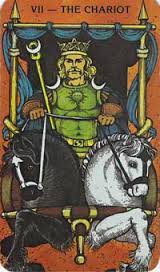
The Chariot, Major Arcana Card VII, tells us that we’ve completed our first major adult life-journey with our first archetypal integration.
The notion of first-stage integration is that we use our force of will to bring our polar opposite archetypes into working together. Sometimes we find an external person who fulfills certain archetypal roles for us. Most of the time, though, we do this for ourselves.
The question is, though: What happens when this is not enough?
A Story from One of My Heroines – Mama Gena
One of my favorite people is author and life-teacher Regena Thomaschauer, aka Mama Gena. Can I say that I absolutely love her blog? And her books? She has (metaphorically, through her books and blogging) held my hand through many a corporate crisis and low moment.
So I was a bit surprised to hear her voice something similar to Emma’s blurt a few weeks ago.
Direct from Mama Gena’s Blog of October 22, 2013, we have this:
So… my inner masculine was fired up and stoked in order to protect and ensure the growth of all this feminine I was responsible for…
But… as all of you know, when a woman lives inside all that strong, virile, productive masculine energy, it can drain the life force out of her. Especially when there are no strong masculine arms to lean into or stand for her.
I know so many women who have given up the soul of their feminine in order to do exactly what I did–raise a child or children on their own… So many women have to sacrifice the softest, sweetest, most delectable, delicious, sensual aspects of who they are in order to climb the corporate ladder, or get noticed for a raise or promotion, or receive the recognition they deserve.
… I had to teach myself through serious trial and big-time error exactly how to create balance within, while managing so much without.
When my masculine was on overdrive, there was no soft spot for her to land… The feminine needs to be fed, like a fire. Or she will extinguish.
Right on, Mama Gena! Absolutely right!
We do need to feed our inner feminine, as our cultures – and the practicalities of our lives – demand that we be so much in our inner masculine.
Of all the people in the world to bring this up, though, the last person that I expected was Mama Gena. She who is the Princess of Pleasure, the Diva of Desire – the one whom I turn to when I need a reminder (or a swift kick in the a**) to reconnect with my own inner feminine – particularly with my Hathor; my goddess of sensual pleasure.
Mama does a really excellent job of this. (Go read Mama Gena’s full blog; she has some great ideas.)
But still – she was struggling.
Why?
Because she’s already done the first stage of integration; she has her Emperor (Protector and Provider) mode working for her daughter Maggie, hand-in-hand with her inner Empress (loving and nurturing).
She works diligently to bring her Hathor (pleasure goddess) into every day of her life. (Applause! I just LOVE the example that she sets for us.)
So what is really going on?
After Integration, What Next?
In the Major Arcana, Card VII – the Chariot (a masculinized version of the Winged Goddess) – represents the big integration step. The Chariot illustrates how we use our force of will to bring together our polar opposite archetypes. Each one wants to go in a different direction. Through sheer determination and will, our inner Charioteer causes them to work together; to pull us all in a single and cohesive direction.
Notice, though.
The Charioteer has to do a whole lot of work.
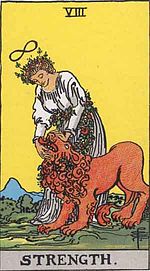
Strength, Major Arcana Card VIII, signifies our entry into our second adult life-journey with a new and deeper form of integration. (Image from the Rider-Waite deck.)
My friend Emma, Mama Gena, and I – and very possibly you as well – are all dealing with second-stage integration.
We’ve learned how to balance being an Emperor (career) with our Empress (care-giving). Really, we have.
It seems as though it still is a lot, and yes, it still is – just because of life’s practicalities.
But really, we’re all at a whole new level.
This managing through force-of-will thing has gotten just a bit old.
We’re ready for a kinder, gentler way of living. Especially, we’re ready to be kinder and gentler to ourselves.
That’s why, when we look at the next image – Major Arcana Card VIII, or Strength – we take courage.
The beautiful, glowing, and softly-flowing Strength Maiden is getting her way with the great, big lion. But she’s not straining. She’s not efforting. She’s not feeling exhausted at the end of the day (or worse yet, exhausted when she wakes up in the morning).
Clearly, she’s getting what she wants in life.
Just as clearly, she’s not having to work nearly as hard as the Charioteer.
Strength introduces us to our second level of life-journey. It seems, at the outset, that we’ll be in a really good place if all that we do is to go from being the strong-willed Charioteer to the gentle (yet effective) Strength Maiden.
Yet, there is more to our next journey than even this.
At the end of this particular journey, we come to a place called Temperance, Major Arcana Card XIV. (This does not mean that we have to give up our favorite cocktails or margaritas. We still get to have our glass of wine with our meals, or a little hot toddy before we go to bed.) Temperance has to do with getting and circulating life-energy. It means that we’re mastering the kind of vital energy that is the fuel for certain martial arts movies.
Temperance is when Yoda says, Use the Force, Luke!
So if this second life-journey has us starting off with a really good place (the Strength Maiden’s gentle yet powerful effectiveness), and ending up in an even better place (using “the Force”), it has to be pretty good, right?
More on this in the next blogpost.
Until then – May the Force be with you! (Oh, I so couldn’t resist that!)
yours in love and laughter – Alay’nya


